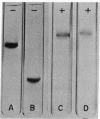Abstract
A polypeptide hormone has been isolated from human urine, human epidermal growth factor. It was assayed by its ability to compete with 125I-labeled mouse-derived epidermal growth factor in binding to human foreskin fibroblasts. The biological effects of the human polypeptide are similar to those previously described for the mouse hormone. These include the stimulation of the growth in vitro of human foreskin fibroblasts and corneal epithelial cells in organ culture, and the in vivo induction of precocious eyelid opening in the newborn mouse. The amino acid compositions of the two polypeptides differ, although certain similarities are present. The estimated molecular weight of the human polypeptide, 5300-5500, is slightly lower than that of the mouse hormone. Both polypeptides apparently compete for the same site on the cell membrane; and antibodies to the mouse polypeptide crossreact to some extent with the human hormone.
Full text
PDF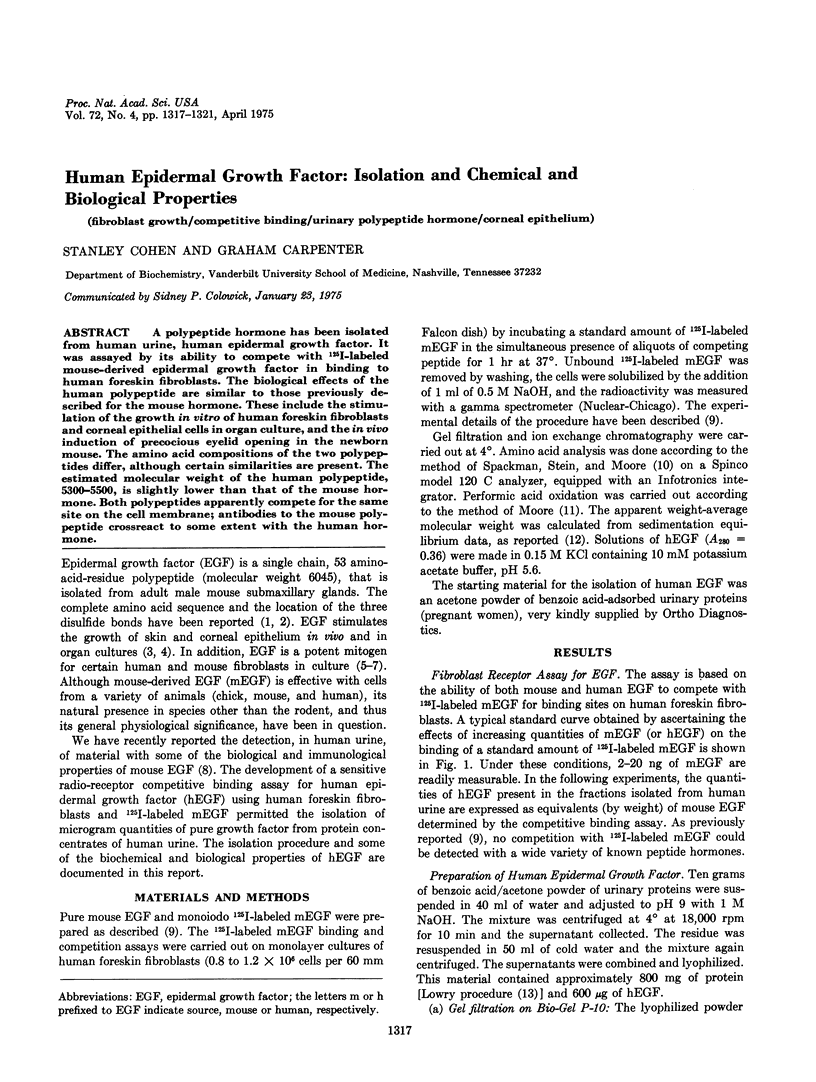
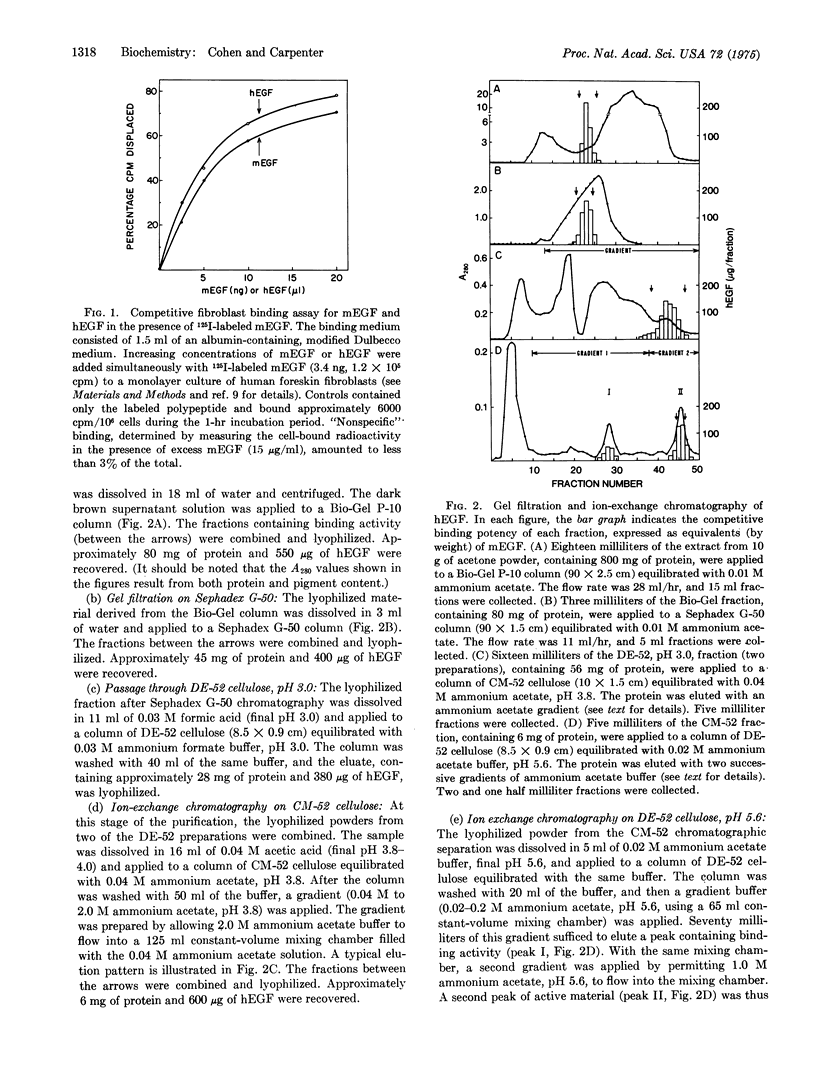
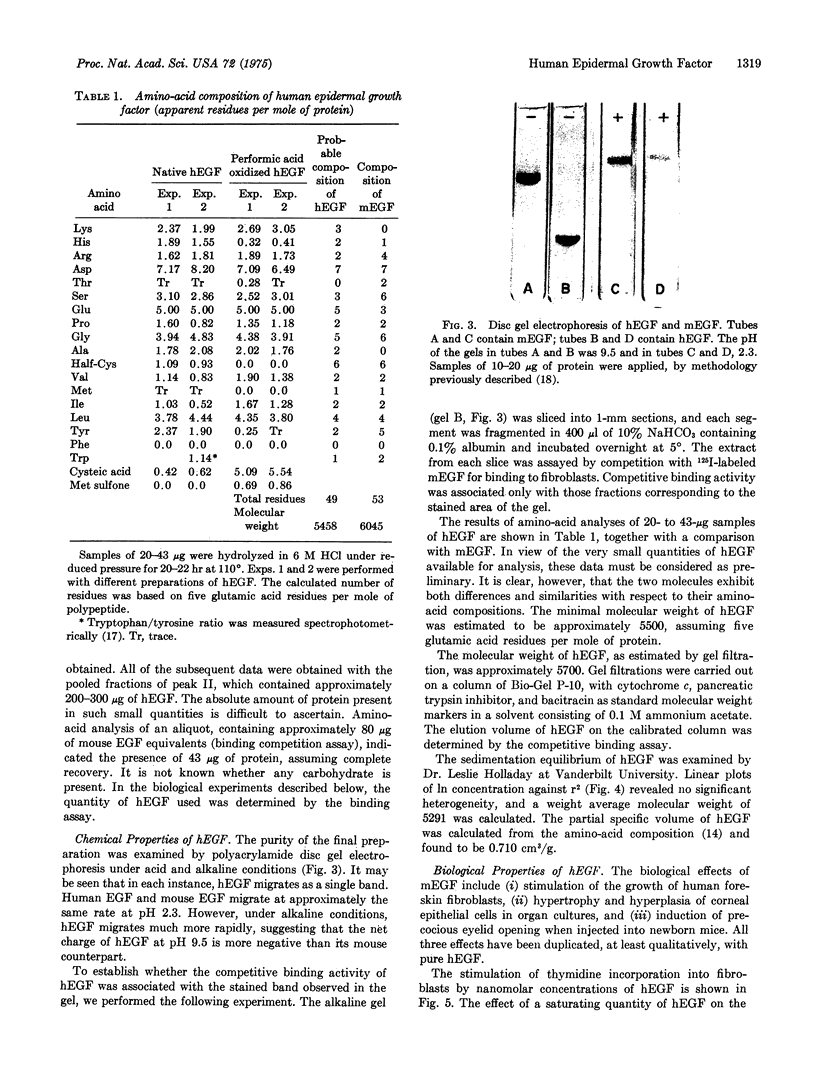
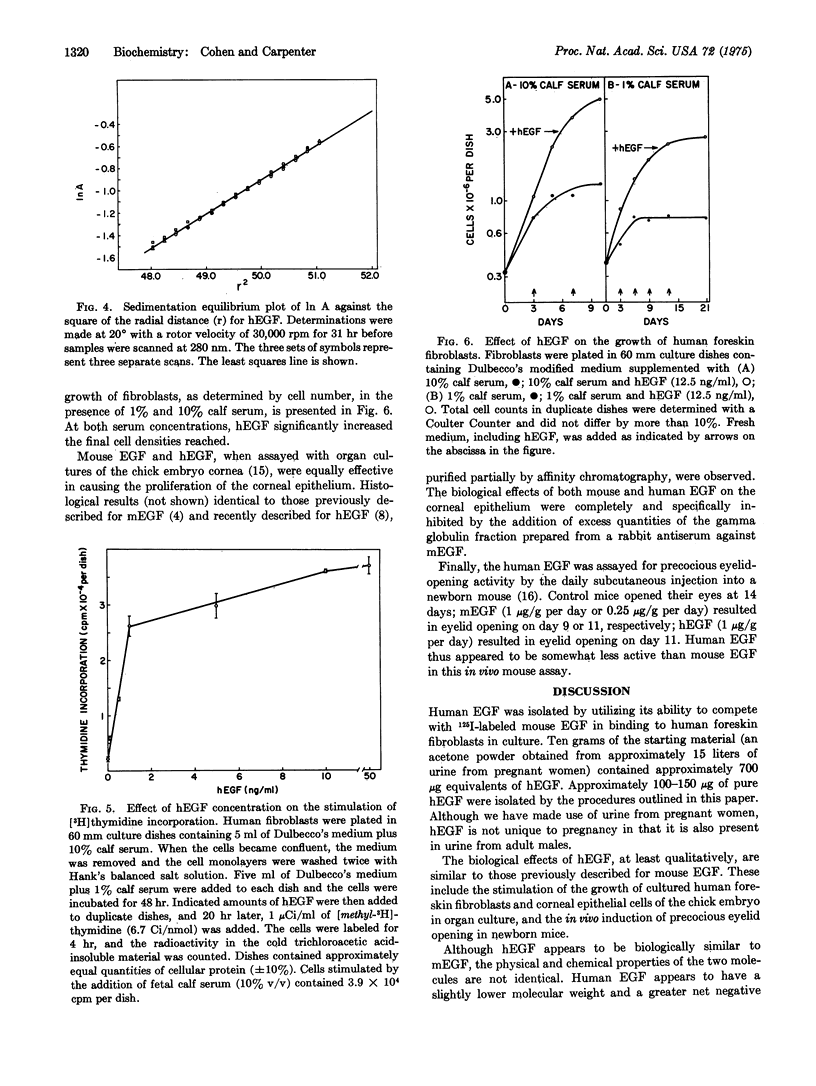
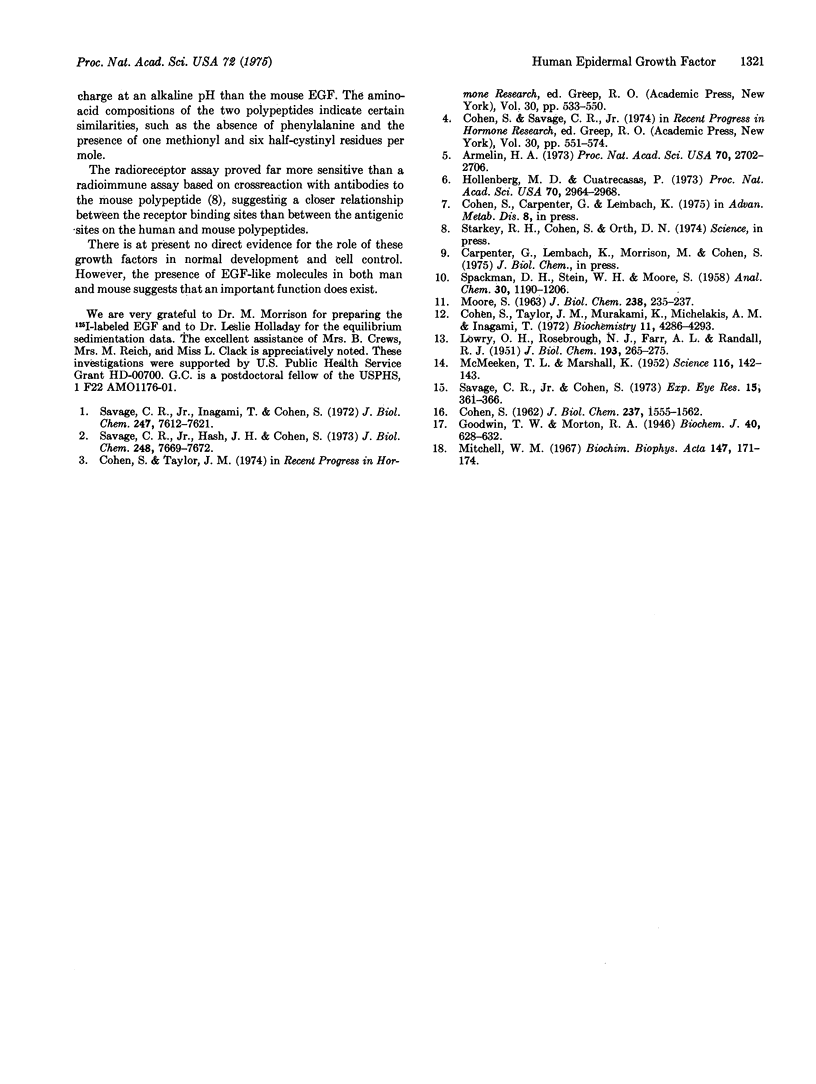
Images in this article
Selected References
These references are in PubMed. This may not be the complete list of references from this article.
- Armelin H. A. Pituitary extracts and steroid hormones in the control of 3T3 cell growth. Proc Natl Acad Sci U S A. 1973 Sep;70(9):2702–2706. doi: 10.1073/pnas.70.9.2702. [DOI] [PMC free article] [PubMed] [Google Scholar]
- COHEN S. Isolation of a mouse submaxillary gland protein accelerating incisor eruption and eyelid opening in the new-born animal. J Biol Chem. 1962 May;237:1555–1562. [PubMed] [Google Scholar]
- Cohen S., Taylor J. M., Murakami K., Michelakis A. M., Inagami T. Isolation and characterization of renin-like enzymes from mouse submaxillary glands. Biochemistry. 1972 Nov 7;11(23):4286–4293. doi: 10.1021/bi00773a015. [DOI] [PubMed] [Google Scholar]
- Goodwin T. W., Morton R. A. The spectrophotometric determination of tyrosine and tryptophan in proteins. Biochem J. 1946;40(5-6):628–632. doi: 10.1042/bj0400628. [DOI] [PMC free article] [PubMed] [Google Scholar]
- Hollenberg M. D., Cuatrecasas P. Epidermal growth factor: receptors in human fibroblasts and modulation of action by cholera toxin. Proc Natl Acad Sci U S A. 1973 Oct;70(10):2964–2968. doi: 10.1073/pnas.70.10.2964. [DOI] [PMC free article] [PubMed] [Google Scholar]
- LOWRY O. H., ROSEBROUGH N. J., FARR A. L., RANDALL R. J. Protein measurement with the Folin phenol reagent. J Biol Chem. 1951 Nov;193(1):265–275. [PubMed] [Google Scholar]
- McMEEKIN T. L., MARSHALL K. Specific volumes of proteins and the relationship to their amino acid contents. Science. 1952 Aug 8;116(3006):142–143. doi: 10.1126/science.116.3006.142. [DOI] [PubMed] [Google Scholar]
- Mitchell W. M. A potential source of electrophoretic artifacts in polyacrylamide gels. Biochim Biophys Acta. 1967 Sep 19;147(1):171–174. doi: 10.1016/0005-2795(67)90101-8. [DOI] [PubMed] [Google Scholar]
- Savage C. R., Jr, Cohen S. Proliferation of corneal epithelium induced by epidermal growth factor. Exp Eye Res. 1973 Mar;15(3):361–366. doi: 10.1016/0014-4835(73)90151-6. [DOI] [PubMed] [Google Scholar]
- Savage C. R., Jr, Hash J. H., Cohen S. Epidermal growth factor. Location of disulfide bonds. J Biol Chem. 1973 Nov 25;248(22):7669–7672. [PubMed] [Google Scholar]
- Savage C. R., Jr, Inagami T., Cohen S. The primary structure of epidermal growth factor. J Biol Chem. 1972 Dec 10;247(23):7612–7621. [PubMed] [Google Scholar]



